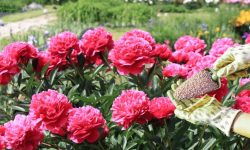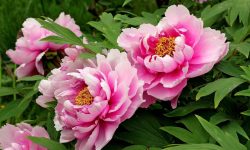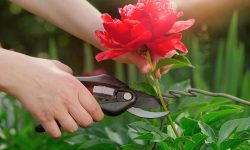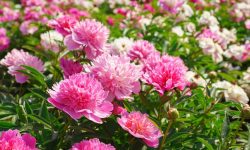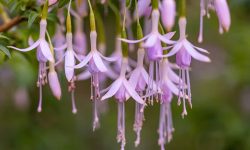There’s something timeless and deeply soothing about the scent of lavender drifting on a warm summer breeze. Whether you’re cultivating a lush garden or nurturing a few fragrant stems in pots, lavender has a way of bringing calm, color, and purpose to every outdoor space. Its soft purple spikes and silvery-green leaves aren’t just visually enchanting—they offer countless uses, from homemade teas and essential oils to beautifully dried bundles for home décor.
But to enjoy the full potential of this beloved herb, you need to know exactly when and how to harvest it. Timing, technique, and a little gentle care can make all the difference between dull, faded blooms and vibrant lavender rich in aroma and color. This guide will walk you through every essential step, helping you harvest your lavender at the perfect moment for stunning, lasting results.
Understanding Lavender’s Growth Cycle
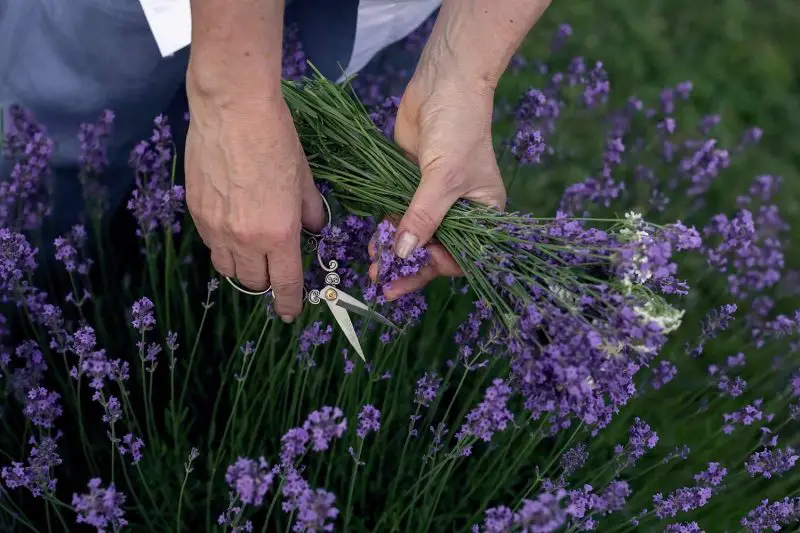
From Sprout to Bloom: What Lavender Needs to Thrive
Lavender is a perennial herb that follows a predictable growth cycle once it’s established. It begins with new growth in spring as temperatures rise, followed by the gradual development of long stems and flower buds. These buds form at the top of the stalks and swell over time, eventually opening into fragrant, tubular blossoms. Depending on the variety and location, the blooming season can begin as early as late May and continue into mid-summer or even fall.
To harvest lavender successfully, it’s crucial to understand this cycle. The timing of your harvest will directly affect the concentration of essential oils in the buds, the durability of the dried stems, and the overall appearance of your floral bundles. Monitoring the plant’s stages closely is essential for achieving both beauty and functionality in your harvest.
Signs Your Lavender Is Ready to Cut
Lavender buds go through several visual changes before they open fully. At first, they appear tightly closed and greenish in tone. As they mature, the buds swell and take on a more vibrant hue, signaling that the oil content is near its peak. The ideal time to harvest is when the bottom third of the flower spikes have begun to open, while the rest remain closed. This timing ensures maximum fragrance and color retention, especially for drying or oil extraction.
If you wait too long and harvest lavender after most of the flowers have bloomed, the essential oils begin to dissipate into the air, and the blossoms become more fragile. Conversely, cutting too early may result in buds that don’t fully develop post-harvest, limiting their scent and use.
Best Time of Day and Weather Conditions for Harvesting
The ideal time of day to harvest lavender is in the early morning, just after the dew has evaporated but before the sun becomes too intense. At this point, the essential oils within the flower buds are at their most concentrated, offering the richest fragrance and the highest quality for drying or oil extraction. Harvesting during the hottest part of the day can cause these oils to evaporate, resulting in a less aromatic yield. Late afternoon is the next best option if morning harvesting isn’t possible, but avoid harvesting in the evening when humidity can rise again.
In terms of weather, dry conditions are essential for a successful harvest. Choose a day with no forecasted rain, low humidity, and plenty of sunlight. Wet weather can lead to mold or mildew forming on freshly cut stems, which may ruin your harvest. It’s best to wait for at least 24 to 48 hours of dry weather before harvesting, especially if you plan to dry the lavender. If the soil is saturated or the flowers are damp, postpone the harvest to prevent rot and preserve the flower’s quality. Ideal weather not only ensures a more fragrant and vibrant crop but also simplifies the drying process by minimizing moisture retention.
Understanding Lavender Varieties and Their Harvest Times
Not all lavender blooms at the same time, and understanding the differences between varieties is key to harvesting at the right moment for best quality. The two most commonly grown types are Lavandula angustifolia (English lavender) and Lavandula x intermedia (Lavandin), and each follows its own seasonal pattern and purpose.
English lavender typically blooms in late spring to early summer and is often ready to harvest in June or early July, depending on your climate. It produces a sweet, floral scent that makes it ideal for culinary use, dried sachets, or essential oils. In contrast, Lavandin—a hybrid variety—usually blooms a few weeks later, from mid to late summer. Lavandin tends to produce longer stems and a stronger, more camphorous aroma, making it better suited for crafts, wands, or potpourri. French lavender and Spanish lavender, while beautiful, are less commonly harvested for drying due to their shorter bloom time and less intense fragrance.
Knowing your specific lavender type helps you monitor bud development and pinpoint the best harvest window. For most varieties, the optimal time is when the majority of buds are plump and about one-third have just started to open, ensuring both fragrance and longevity after drying.
Tools and Techniques for Cutting Lavender Safely
Harvesting lavender with care protects both the health of the plant and the quality of your harvest. Start by using sharp, clean garden shears or pruning scissors to ensure smooth cuts that won’t crush the stems or cause unnecessary damage. It’s important to sterilize your tools beforehand with rubbing alcohol or a diluted bleach solution to prevent spreading disease between plants. When cutting, snip stems about one-third to halfway down, just above a set of leaves. This encourages healthy regrowth and helps the plant retain its natural form. Try to work in the morning, after the dew has dried but before the sun is at its peak, to capture the richest aroma in the flowers.
Bundle approximately 50 to 100 stems together, depending on how you plan to dry them, and secure each bunch loosely with string or rubber bands. If you’re harvesting for essential oils or fragrant crafts, choose flower spikes where the bottom buds have begun to open—this stage contains the highest concentration of oils. Always handle the stems gently to prevent bruising, which can diminish their scent and appearance. Avoid pulling or snapping branches, as this can stress the plant and open it up to pests or fungal infections. With the right techniques and timing, your lavender harvest can be both abundant and high in quality.
Drying Methods to Preserve Lavender’s Scent and Color
Drying lavender correctly is essential for preserving its fragrance, color, and structural integrity. The most traditional and effective method is air drying. This involves hanging small bundles of lavender upside down in a dark, dry, and well-ventilated area. Darkness helps retain the vibrant purple hue of the blossoms, while air circulation prevents mold or mildew. Be sure to space the bundles apart so that air can flow freely around each one. Depending on humidity levels, lavender typically dries within one to two weeks using this method. You’ll know it’s ready when the stems snap crisply and the flowers feel dry to the touch.
For gardeners with limited space or in humid climates, using a dehydrator or an oven set to its lowest temperature is a practical alternative. Place lavender stems on mesh trays in a single layer, keeping them from overlapping. Dry them slowly at low heat—no more than 100°F (38°C)—to preserve their essential oils and color. Check frequently to avoid overdrying, which can cause blossoms to become brittle and lose scent. Whichever method you choose, store your dried lavender in airtight containers away from light and moisture to maintain quality for months to come.
Storing and Using Dried Lavender for Lasting Beauty
Once your lavender is fully dried, proper storage is key to maintaining its fragrance and appearance. The best way to store dried lavender is in airtight containers such as glass jars, metal tins, or resealable bags. Keep these containers in a cool, dark place to protect the lavender from moisture and sunlight, both of which can quickly degrade its quality. Avoid plastic containers that may trap humidity or alter the scent. Stored well, dried lavender can retain its aroma and color for over a year, ready for use whenever inspiration strikes.
Dried lavender is incredibly versatile in both decorative and practical applications. It adds rustic charm when arranged in vases, wreaths, or potpourri bowls around the home. For relaxation and sleep, place sachets of lavender in drawers or under pillows to release a gentle, calming aroma. You can also incorporate dried lavender into handmade candles, soaps, and bath salts for a fragrant personal touch. Whether displayed in your living space or used in DIY gifts, your carefully harvested lavender will continue to bring joy long after the growing season ends.
Lavender in Culinary Uses
Lavender isn’t just for fragrance—it also brings a delicate, floral flavor to many culinary creations. When used properly, lavender can elevate both sweet and savory dishes with its subtle notes of citrus and herbs. The most common variety used in cooking is English lavender (Lavandula angustifolia), prized for its low camphor content and mild taste. Whether dried or fresh, lavender can be infused into sugar, honey, syrups, and cream, lending a sophisticated aroma to cookies, cakes, lemonades, and ice cream.
In savory recipes, a small amount of lavender can enhance marinades, roasted meats, or herb blends like Herbes de Provence. However, moderation is key—too much lavender can quickly overpower a dish and introduce a soapy or bitter aftertaste. Always start with a small quantity and taste as you go. For safety, make sure the lavender you use is culinary-grade, organic, and free from pesticides or chemical residues. When harvested and dried at home, your own lavender becomes a unique ingredient that adds beauty, fragrance, and flavor to your kitchen.
Lavender in Craft and Decor Projects
Lavender’s timeless beauty and calming fragrance make it a favorite in handmade crafts and natural home décor. One of the simplest yet most charming ways to showcase dried lavender is in bouquets or wreaths. Bundles tied with twine and hung upside down can become elegant wall hangings, while circular wreaths formed with dried stems add a rustic, romantic touch to any entryway or living space.
For smaller, more personal creations, lavender buds can be sewn into sachets to freshen drawers, placed in small bowls as natural air fresheners, or mixed with other dried flowers for potpourri. Crafters also love incorporating lavender into candles, soaps, and bath salts, giving their projects both aesthetic beauty and relaxing aromatherapy benefits. Its versatility allows it to complement both modern minimalism and vintage charm, making lavender a beloved choice for thoughtful gifts and seasonal decorations alike.
The Role of Essential Oils and Their Peak Concentration
The essential oils in lavender are what give the plant its signature fragrance and many of its therapeutic benefits. These oils are stored in tiny glands on the flower buds and stems, and their concentration fluctuates depending on the plant’s stage of bloom. The ideal time to harvest lavender for maximum oil content is just as the first few buds on each stem begin to open. At this point, the oil glands are full, and the aroma is at its richest. Harvesting too early may result in a less potent scent, while harvesting too late can lead to oil degradation and a more muted fragrance.
If you’re growing lavender specifically for oil extraction, this timing becomes even more important. Once the buds are fully open and the petals begin to fall, much of the oil has either evaporated or lost its top aromatic notes. For those using lavender in aromatherapy, skincare, or homemade balms, paying attention to peak essential oil content ensures your efforts yield the highest quality result. A sunny morning, once the dew has dried, is the best time to harvest, locking in the oils before the heat of the day begins to reduce their potency.
Encouraging a Second Bloom After Harvest
Lavender plants have the potential to produce a second, lighter bloom if cared for correctly after the initial harvest. This second flowering isn’t as full or fragrant as the first, but with proper timing and gentle maintenance, it can still add beauty and value to your garden. To encourage it, begin by cutting back the flowering stems right after the first bloom, making sure to leave some green foliage and avoid cutting into the woody base of the plant. This helps the plant focus its energy on new shoot growth rather than maintaining spent blooms.
Watering lightly but consistently after pruning helps support this regrowth, especially in drier regions or during hot summer spells. Applying a small amount of low-nitrogen fertilizer or compost can also give the plant the nutrients it needs to push out a second flush of flowers. Avoid over-fertilizing, though, as this can lead to more foliage than flowers. If the weather remains warm and sunny and your lavender variety is one that responds well to summer trims—such as English or Spanish lavender—you may enjoy a modest second bloom that carries well into late summer or early fall.
Safety and Allergies When Handling Lavender
While lavender is beloved for its calming scent and gentle appearance, it’s important to be mindful of potential allergic reactions or sensitivities that some people may experience when handling it. For most gardeners and home users, touching or harvesting lavender poses no risk. However, individuals with sensitive skin may develop mild irritation, redness, or itching after prolonged contact with the fresh plant or its essential oils. Wearing gardening gloves when pruning or harvesting can help reduce this risk, especially for those with known sensitivities.
Inhalation of strong lavender scent, especially in concentrated forms like essential oils or dried sachets, may also trigger mild headaches, dizziness, or respiratory discomfort in sensitive individuals. It’s always wise to use lavender in well-ventilated areas and avoid overexposure during drying or storage. Additionally, if you plan to use lavender in culinary or herbal applications, ensure that it’s an edible variety and has not been treated with pesticides or chemical sprays. By being attentive and gentle in how you handle lavender, you can enjoy its many benefits while avoiding unwanted reactions.
Frequently Asked Questions About Harvesting Lavender
When is the best time to harvest lavender for drying?
The best time to harvest lavender for drying is when the flower buds are mostly closed but have just started to show color. This is when the plant contains the highest level of essential oils, giving you maximum fragrance and longevity after drying. Early morning on a dry day is ideal to preserve the oils.
Can you harvest lavender after it blooms?
Yes, you can still harvest lavender after it blooms, but the quality of the oils and scent may be reduced. Fully opened flowers tend to lose their fragrance quickly and may drop petals during the drying process. For the most potent results, harvest just before full bloom.
How do I know if my lavender is ready to harvest?
Your lavender is ready to harvest when the flower spikes are full, plump, and starting to show vibrant color, but before the majority of buds have opened. Touching the buds lightly—if they feel firm and aromatic, it’s usually the right time.
What tools should I use to harvest lavender?
Use clean, sharp garden shears or scissors to make neat cuts without damaging the stems. Cut above the woody part of the plant, gathering several stems at once to encourage healthy regrowth and possibly a second bloom.
Will lavender grow back after harvesting?
Yes, lavender will grow back if harvested properly. When you cut above the woody base and leave enough green growth, the plant has the energy to regenerate. With the right care, some varieties can even produce a second flush of blooms later in the season.
Conclusion
Harvesting lavender is more than just a gardening task—it’s a mindful process that allows you to enjoy the full beauty and benefits of this aromatic herb. By timing your harvest carefully, using the right tools, and applying proper drying and storage techniques, you can preserve your lavender’s color, scent, and usefulness for months to come. Whether you’re crafting, decorating, or simply savoring its natural fragrance, homegrown lavender offers lasting joy and a deeper connection to your garden. With a little care and attention, every bundle you harvest becomes a fragrant reminder of summer’s grace and serenity.

